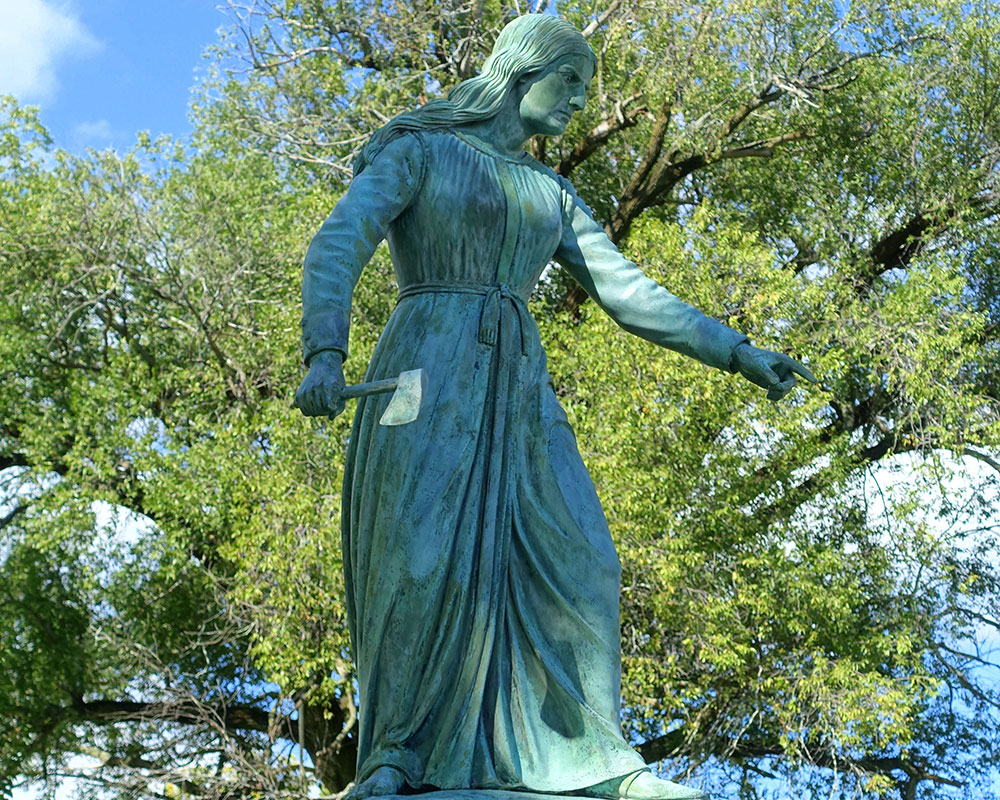Although there was no shortage of ideas on what should be done with the Hannah Duston statue in downtown Haverhill’s Grand Army of the Republic—GAR—Park, the pioneer woman’s memorial will be staying where it is for the time being.
A second joint meeting of the Haverhill City Council’s Natural Resources and Public Property Committee and the Haverhill Historic Commission took place last night at Haverhill City Hall. David Duston, a descendant of the woman at the center of the controversy, addressed the joint committee
“We believe that this statue is an emblem of the spirit of such female, Haverhill survivors of brutal colonial conflict. And, we believe that its relocation or destruction would represent a dramatic loss to the landscape and legacy of this city, but we recognize that aspects of the statue reflect the prejudices of its time,” he said.
Duston went on to say that for that reason, members of the Dustin-Duston Family Association are working with the state of New Hampshire to include a Native American counterpoint to a similar statue located in Boscawen.
Other attendees expressed opinions ranging from moving it to another location to tearing it down completely.
Members of Haverhill’s Historic Commission had their own ideas on what action should be taken. Ron Peacetree suggested having archeologist research files from the 1600s before moving ahead with any plans. Fellow Commissioner Thomas Wylie disagreed, however, saying that while historical accuracy is always important, the real issue is finding a compromise that is fair to everyone.
“I think what needs to be done is to relocate the statue. I’m not in favor of taking it down. There’s a lovely city park called Hannah Duston Park or, obviously, if they would take it, the Buttonwoods Museum because it is part of who we are.” he said.
The Buttonwoods Museum and the Dustin-Duston Garrison House Association, however, have both refused to take the statue fearing that it could lead to vandalism of their properties.
After considerable discussion, City Councilor Joseph J. Bevilacqua made a motion to keep the statue in its current location with a parcel of park land nearby donated to Native American groups so they could erect another monument to better balance and explain what life was like back in the 1600s.
That motion will now be taken to the full City Council for further discussion and consideration.
